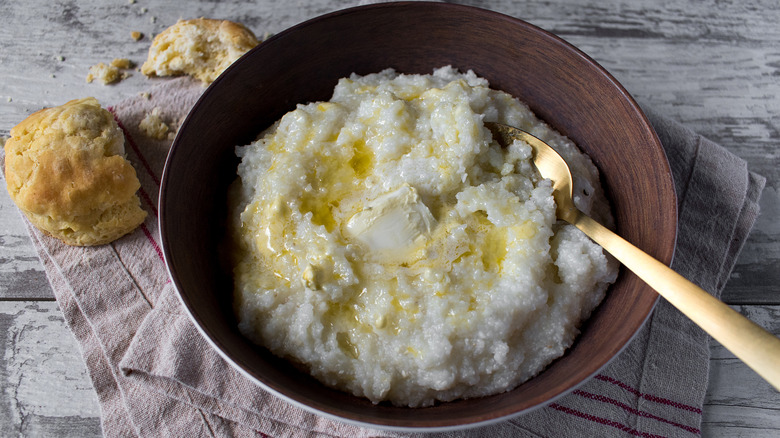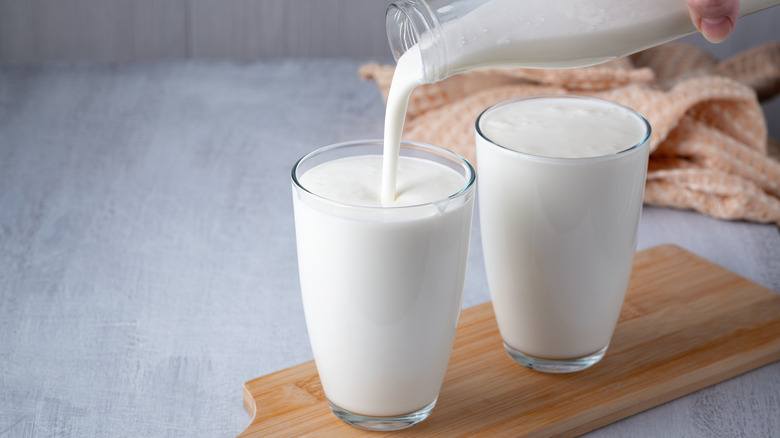For Unbelievably Tangy Grits, Cook Them In Buttermilk
Ah, grits, the Southern culinary cornerstone that has graced breakfast tables for generations. But what if we told you that there's a secret to elevating these humble ground kernels to a whole new level of tangy delight? By augmenting the cooking liquid used to make your grits with buttermilk, you give them added depth and dimension.
Grits, of course, are made from ground, dried corn. They can be either white or yellow, depending on the type of corn used, and they have a neutral to sweet and earthy flavor, making them a versatile canvas for a variety of flavors. Buttermilk, on the other hand, is a slightly acidic, fermented liquid made from milk. Though the term once referred what was left over after churning butter, this isn't the case anymore. Buttermilk has a zesty tang that's perfect for baking, marinating, and enhancing the creaminess of grits.
One important thing to keep in mind is that you do not want to exclusively use buttermilk in your grits, which would result in a dish that is too sour. That said, the beauty of this dish lies in its versatility. Say you're looking for a more savory twist. Try adding a bit of stock to your buttermilk grits. Or, consider mixing in some cream. This addition transforms your buttermilk grits into a velvety side dish that pairs perfectly with a range of main courses.
How to use buttermilk in grits
One classic pairing that's a match made in Southern heaven is shrimp and buttermilk grits. The succulent, saucy, garlicky shrimp play off the tanginess of the grits, which can be enhanced further with the addition of a sharp cheddar cheese or a scoop of creamy goat cheese. If you're in the mood for something heartier, consider serving buttermilk grits alongside milk-braised pork. The creamy, tangy grits complement the richness of the pork, creating a meal that's both comforting and indulgent.
However you wish to serve buttermilk grits (they're also great with just a pat of butter, a scoop of jam, or a drizzle of maple syrup), there are some cooking tips to keep in mind. One is that you should never cook grits over high heat. You want to avoid scorching them — and yourself if they splatter — so keep the heat low while the grits absorb the liquid. You also want to aim for grits that are a bit on the thicker side and nicely softened while still being al dente. Grits can always be thinned out with a bit of cream or milk after they've been cooked. Whether you go for tangy simplicity or add a savory or creamy touch, next time you're in the kitchen, don't forget to let buttermilk work its magic on your grits. You won't be disappointed.

